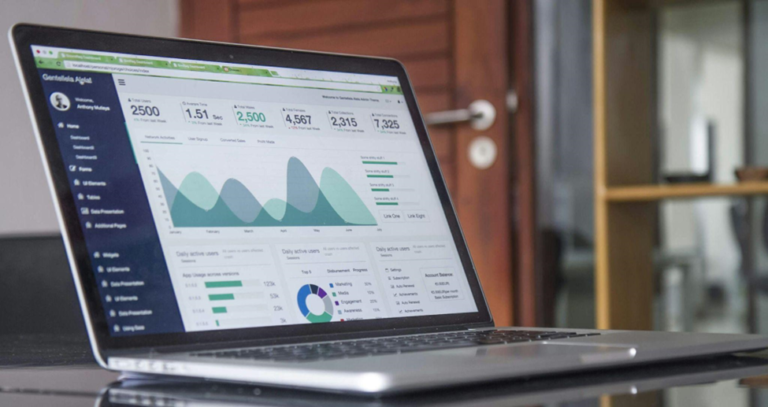Budgeting Methods: How to Manage Household Expenses & Spending Money
Financial management helps you save money and achieve your goals. Effective financial management is essential for many families to manage money properly. A clear management system includes using spreadsheets, budgeting apps, and tracking programs.
Everything you need for proper management helps you allocate funds for expenses correctly. Budgeting helps you understand how to manage funds properly and track where your money goes. Everyone should determine the right priorities for their personal finances. Budgeting methods are necessary for correct fund allocation and long-term success.
Many people use specialized programs that automatically track and control their spending. Programs and applications help you examine where funds go and monitor all financial transactions. Financial analytics are invaluable for anyone concerned about their spending habits and income management.
It’s important to understand your typical monthly expenses to identify saving opportunities. Many people save money for future goals or specific purchases they want to make. To maximize proper financial management, it’s sometimes necessary to limit certain expenses.
Typical Monthly Expenses (Where Does Your Money Go?)
Many people are interested in the question “how to save money?” while feeling financially comfortable. It’s important to study where your money goes in everyday life. For families that want to save money, budgeting is the main foundation.
Allocating your budget using various methods provides security and peace of mind. Estimating expenses for specific categories is essential for everyone. Here is a key list of typical monthly expenses for everyone:
Housing People primarily spend money on housing costs like rent or mortgage payments. Often, utilities are also critical monthly expenses. For people who use internet and mobile communications, these expenses are mandatory.
- Food. Food takes up a specific portion of the budget each month. Depending on the number of family members, a certain amount is allocated for food. Shopping at supermarkets and food delivery from restaurants require proper expense planning.
- Transportation. Typical monthly expenses include transportation such as car payments or public transport. People who have cars spend on fuel, maintenance, and repairs. Quite often, taxis and car sharing require additional financing.
- Personal Expenses. Personal expenses include clothing, shoes, and hygiene products. Each person spends a certain amount on manicures, massages, and other services.
- Healthcare and Medical. Healthcare and medical expenses are necessities for a better life. People usually spend money on insurance, doctor visits, and tests. Depending on the situation, they buy medicines and vitamins that are necessary.
- Education and Development. Typical monthly expenses include education and development for yourself or your children. Usually, courses, tutors, books, and educational materials require money.
- Entertainment. Depending on finances, families spend money on entertainment. Going to movies, concerts, or restaurants is an entertainment expense. Often, subscriptions to various platforms such as Spotify and Netflix require money.
- Savings and Investments. Typical monthly expenses include savings and investments. Many families set aside money for a specific purpose or goal. Most people have investment accounts or retirement accounts where money goes regularly.
- Unexpected Expenses. Unexpected expenses include gifts, holidays, and other costs. Unforeseen expenses that don’t require investment each month are pretty standard.
How to Create a Spending Plan (Step-by-Step)
Creating a spending plan will help you manage your money properly. A plan is essential for researching where money is spent and where it comes from. Managing money will help avoid stress and stay calm when spending.
A good plan is a reliable tool for correct fund allocation. The approach will help control finances and achieve financial goals. Here are step-by-step instructions for creating the right plan:
- Step 1: Determine Monthly Income. Determining monthly income will help you manage your money correctly. Monthly income includes salary, various side jobs, and pensions. Using net income is the primary source for current allocation.
- Step 2: Collect Information. It’s important to collect all information to create a reliable spending plan. Analyzing expenses for several months or weeks will help you understand which categories are most necessary.
- Step 3: Allocate by Category. It’s important to allocate expenses by category and set the right budget. Depending on income, costs may vary. Each category requires a certain amount depending on the budget for the month.
- Step 4: Set Financial Goals. Spending money on planning is key to creating the right financial goal. It’s important for everyone to research what is a priority, whether to pay off debts or save money.
- Step 5: Adjust and Monitor. Adjusting the plan is the main goal for constant monitoring of funds. The 50/30/20 rule involves discipline and the right approach to financial distribution. The largest amount should be spent on housing, food, and transportation. 30% is for desired expenses for entertainment and various purchases. The other 20% should go to savings or debts, if any.
Budget Analysis – Are You Overspending?
Budget analysis is an important factor that helps examine the availability of funds. Analysis is a consistent tool for controlling current expenses and income. Analysis helps check problems and explore funds regularly. Here are the key signs that costs are too high:
- Running Out of Money. The leading indicator is insufficient funds by the end of the month. A person cannot understand why there isn’t enough money and lives paycheck to paycheck.
- No Savings. The lack of savings is an indicator that funds aren’t being distributed correctly. For people who don’t save anything, this is a big signal about incorrect distribution and spending.
- Using Credit Cards. Budget analysis helps examine funds for certain purchases. Analysis can show that the use of funds isn’t going well. The main signs include using credit cards and loans without spending your own funds.
- Increasing Variable Costs. Another important sign of high expenses is an increase in variable costs. Categories such as entertainment, travel, and restaurants can be expensive.
- Exceeding Budget Limits. The main sign is when expenses exceed the basic salary. If a person exceeds planned limits every month, the person is mismanaging their finances.
It’s important to constantly conduct budget analysis to study where funds come from. Determining the right categories will help manage money correctly. It’s important to compare real expenses with current ones and start saving. The right approach will help not only save money but also learn to be disciplined. For people who spend a lot of money, a plan for limiting it is essential.
5 Best Budgeting Methods
Reliable budgeting methods will help you manage your finances properly. There are five great methods that guarantee success for every person. The methods are focused on lifestyle, salary level, and the total amount of money. The best methods will suit everyone to manage their finances properly. Here are their key characteristics:
- The 50/30/20 Method. The method is a good way for families with high earnings. 50% of the total salary goes to transportation, food, and housing. The other 30% are desired expenses for entertainment and having a good time. This 30% includes going to movies, traveling, and entertainment. The other 20% is spending money on debts or saving.
- Zero-Balance Budget. A zero-balance budget is suitable for disciplined and responsible people. The method involves the initial allocation of funds to get to zero by the next salary.
- The Envelope Method. The envelope method involves distributing cash in envelopes. Envelopes are labeled depending on categories for housing, food, transportation, and entertainment.
- The “Pay Yourself First” Method. Among the most effective budgeting methods, this method is best for building an emergency fund. People who want to save a fixed amount choose this method.
- Budgeting by Categories. Budgeting by categories is best suited for families with irregular income. Budgeting involves creating a specific amount for each category. Typically, families allocate budgets for food, transportation, and entertainment and maintain special tables or applications.
How to Reduce Household Expenses
Household expenses can take up a large amount of income. Proper allocation of funds will help reduce costs and allow you to live comfortably. Reducing household expenses should be done carefully to avoid reducing your standard of living. Here are some key tips:
- Cancel Unnecessary Services. It’s important to cancel all services that aren’t necessary or are unused. Streaming programs and unused applications should be canceled.
- Cook at Home. An emphasis on home-cooked meals will help save money on other expenses. For families planning to reduce costs, home-cooked meals become a cheaper option than going to restaurants.
- Reduce Utilities. Reducing household expenses is possible thanks to managing utilities. It’s important to turn off lights after use and use LED lamps. Reducing thermostat temperature and reducing air conditioning use will save money.
- Shop with Lists. The main rule is to create a list before shopping at the store. Following the list will help you spend money according to your goals.
- Set Transportation Limits. Reducing transportation costs and setting limits on categories will save money. It’s important to correctly set limits on things that are necessary.
- Review Bills. To reduce household expenses, everyone should review their bills. Reducing internet and phone rates will help save money. Buying used items or purchasing second-hand items is also a great way to save money.







